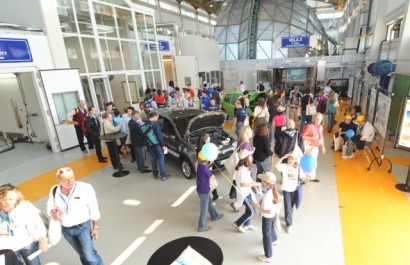
The Letter of Intent creates the basis for the establishment of two Electric Vehicle and Smart Grid Interoperability centres, one at Argonne National Laboratories, in the US, and one at the JRC facilities in Ispra (Italy).
The twin centres will facilitate permanent contact between EU and US scientists, promoting a common approach between the two sides on the testing of relevant electric vehicle and smart grid equipment, and the fostering of global standards. They will address the interoperability issues between e-vehicles, smart grids and recharging systems.
The centres will also provide testing facilities for electric vehicles and the related supply equipment, and participate in each other’s inter-laboratory comparisons. The JRC and the DoE will work together to prepare a work plan for the centres outlining common goals and final targets.
European Commissioner for Research and Innovation, Máire Geoghegan-Quinn, said: "Promoting excellent science, competitive industries and better society is a priority for the European Commission. This agreement puts the EU and US in the driving seat on research into e-mobility and smart grids for energy. Standardisation and interoperability are fundamental if we want our markets to work smoothly together and to get results faster and more efficiently".
The laboratory which is involved in the twinning mentioned in the Letter of Intent, on the JRC's side, is VELA (Vehicle Emissions Laboratory), a test installation of the JRC’s Institute for Energy and Transport (IET). VELA comprises testing facilities capable of measuring the emissions and environmental impacts associated with advances in vehicle engine technology from a variety of vehicles, ranging from motorbikes to heavy duty engines such as buses and trucks. In addition to this it carries out energy efficiency and cost-benefit analysis of cleaner transport technology options including electrical, hybrid, hydrogen and fuel cell vehicles.
On 21 November the JRC co-hosted with the US Ambassador to the EU, William E. Kennard, a roundtable "Building a Transatlantic Scientific Bridge" at the Commission's headquarters in Brussels, discussing the Clean Energy and Mobility Revolution, with a focus on e-mobility and smart grids, as well as scientific support to policy making. The roundtable was attended by representatives of the US Congress and European Parliament, as well as representatives from the industry, standardisation bodies and the science community.
The Transatlantic Economic Council was set up in 2007 to guide and stimulate transatlantic economic convergence. Co-chaired by Commissioner Karel De Gucht, and US Deputy National Security Adviser for international economic affairs, Michael Froman, the TEC is a political forum where participants can explore joint approaches to strategic global economic questions. E-mobility is a key topic of the TEC.
[Photo: JRC’s Institute for Energy and Transport during one of its open days]
For additional information:

